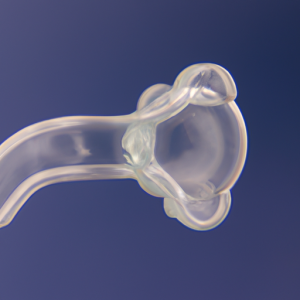Benign diseases of the mammary glands are a common concern among women, with a wide range of symptoms and potential causes. While these conditions are not life-threatening, they can still cause discomfort and anxiety. Understanding the causes, symptoms, and diagnostic methods for these diseases is crucial to ensure timely intervention and appropriate treatment. In this article, we will delve into the world of benign diseases of the mammary glands, exploring the various causes, symptoms, and diagnostic techniques. Additionally, we will provide a comprehensive guide to the available treatment options, helping women make informed decisions about their healthcare. Lastly, we will discuss management strategies and lifestyle modifications that can assist individuals in living with these conditions. By shedding light on this topic, we hope to empower women with the knowledge necessary to navigate these benign diseases and improve their quality of life.
1. Understanding Benign Diseases of the Mammary Glands: Causes, Symptoms, and Diagnosis
Benign diseases of the mammary glands, also known as non-cancerous breast conditions, are a common occurrence in women. These conditions encompass a wide range of abnormalities that can affect the breast tissues, causing discomfort and concern. While they are not life-threatening like breast cancer, they can still cause distress and require medical attention. In this section, we will explore the causes, symptoms, and diagnostic methods of benign diseases of the mammary glands.
Causes:
The exact causes of benign breast conditions are often unknown, but there are several factors that can contribute to their development. Hormonal fluctuations, such as those experienced during puberty, pregnancy, and menopause, play a significant role in the development of these conditions. Additionally, genetics, family history, and lifestyle factors, such as obesity and alcohol consumption, can increase the risk of developing benign breast diseases.
Symptoms:
Benign breast conditions can manifest in various ways, with symptoms ranging from mild discomfort to noticeable changes in the breast. Common symptoms include breast pain or tenderness, lumps or thickening of breast tissue, nipple discharge, breast swelling or redness, and changes in breast size or shape. It is important to note that these symptoms can also be indicative of other breast-related issues, emphasizing the need for proper diagnosis.
Diagnosis:
To diagnose benign diseases of the mammary glands, a comprehensive evaluation is necessary. The diagnostic process usually begins with a thorough medical history review and a physical examination of the breasts. This may be followed by imaging tests such as mammography, ultrasound, or MRI, which can help visualize the internal structures of the breast and identify any abnormalities. In some cases, a breast biopsy may be performed, where a small sample of tissue is collected and examined under a microscope to determine the nature of the condition.
It is crucial to consult a healthcare professional if any concerning symptoms
2. Exploring Treatment Options for Benign Diseases of the Mammary Glands: A Comprehensive Guide
When it comes to the treatment of benign diseases of the mammary glands, there are several options available. The choice of treatment depends on various factors, including the specific condition, severity of symptoms, and individual patient preferences. It is essential to consult with a healthcare professional who specializes in breast health to determine the most suitable course of action.
1. Observation and Monitoring: In some cases, especially when the condition is mild and not causing significant discomfort, observation and monitoring may be recommended. Regular check-ups and screenings can help track any changes and ensure early detection if the condition worsens or develops into a more serious problem.
2. Medications: Medications are frequently prescribed to alleviate symptoms and manage underlying causes of benign diseases of the mammary glands. Commonly used medications include pain relievers, anti-inflammatory drugs, and hormonal therapies. Hormonal therapies, such as birth control pills or hormone replacement therapy, may help regulate hormone levels and reduce symptoms associated with hormonal imbalances.
3. Lifestyle Modifications: Making certain lifestyle modifications can also contribute to the management of benign diseases of the mammary glands. These modifications may include maintaining a healthy weight, adopting a balanced diet, regular exercise, and avoiding excessive alcohol consumption. Such changes can help reduce the risk of developing certain conditions and alleviate symptoms.
4. Surgical Interventions: In some cases, surgical intervention may be required to address benign diseases of the mammary glands. This option is usually considered when conservative treatments fail to provide relief or when the condition poses a risk to the patient’s health. Surgical procedures can range from minimally invasive techniques, such as cyst aspiration or biopsy, to more extensive surgeries like lumpectomy or mastectomy.
5. Supportive Therapies: Alongside medical treatments, supportive therapies can be beneficial in managing benign diseases of the mammary glands. These therapies may include physical therapy, massage
3. Living with Benign Diseases of the Mammary Glands: Management Strategies and Lifestyle Modifications
Living with benign diseases of the mammary glands can be challenging for many women. These conditions, although not life-threatening, can cause discomfort and affect the quality of life. However, with proper management strategies and lifestyle modifications, women can effectively cope with these conditions and experience improved well-being.
One of the key management strategies for benign diseases of the mammary glands is regular follow-up with a healthcare professional. This ensures that any changes or developments in the condition are promptly identified and addressed. Regular check-ups, including clinical breast examinations and imaging tests such as mammograms or ultrasounds, can help monitor the progression of the disease and detect any potential complications.
Additionally, self-examination of the breasts is an important aspect of managing benign diseases. Women should be familiar with the normal texture and appearance of their breasts so that they can detect any abnormalities or changes. By performing regular self-examinations, women can play an active role in their own healthcare and quickly report any concerns to their healthcare provider.
Treatment options for benign diseases of the mammary glands vary depending on the specific condition and its severity. In some cases, no treatment may be necessary, and the condition can resolve on its own. However, if symptoms persist or worsen, treatment may involve medication, such as pain relievers or hormone therapy, to alleviate discomfort and regulate hormonal balance.
In certain cases, surgical intervention may be required. This could involve the removal of cysts, fibroadenomas, or other benign growths through a minimally invasive procedure. Although surgery may cause temporary discomfort and require a recovery period, it can provide long-term relief and peace of mind for women living with benign diseases of the mammary glands.
Apart from medical interventions, lifestyle modifications can also contribute to managing these conditions effectively. Maintaining a healthy lifestyle, including regular exercise, a balanced diet, and adequate sleep,

